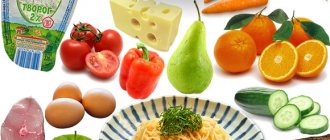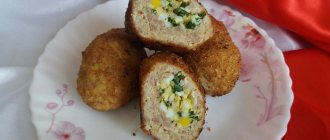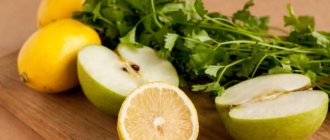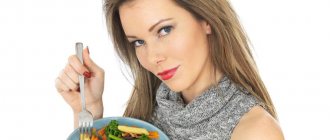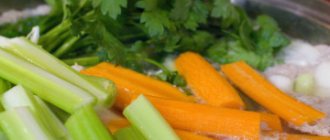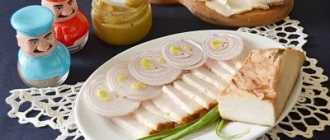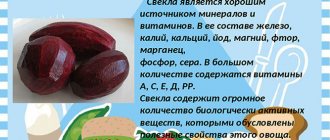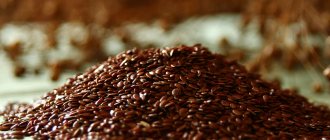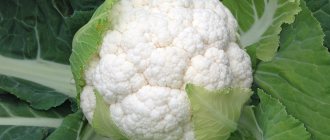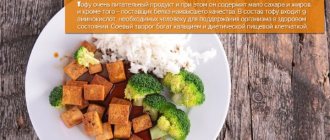Salt is an essential element of any cooking and healthy diet, because it was not without reason that in ancient times it was sold for its weight in gold! Sodium chloride is part of the lymph and blood, all cells; without its participation, the isotonic state of fluid in the body is impossible, because chlorine and sodium ions are involved in all the most significant life processes.
The daily salt intake is 5-8 grams. And since many exceed it five times, there is a so-called salt-free diet that helps cleanse the body of excess salt. This process is very important, since the retention of sodium chloride in the body leads to the appearance of edema, salt deposits in the cartilage and increased blood pressure.
This is why a salt-free diet is often prescribed to people with chronic diseases - it allows you to regain health and lose excess weight with virtually no effort.
The principle of the diet and its features
A salt-free diet meets all the tenets of a healthy diet, which explains its effectiveness. It has practically no restrictions in the choice of menu; nutrition during a salt-free diet is balanced, which means it does not harm the body.
Recommended products are wheat and rye bread (norm 200 g), soups with a weak vegetable or fish broth, lean fish and meat, beets and carrots, zero-fat lactic acid products, berries and fruits, low-fat cottage cheese, zucchini, cucumbers, radishes and boiled eggs. You can have no more than 10 g of oil per day, tea. But it’s better to limit coffee. You should completely avoid grapes, jam, bananas and sugar, alcohol, baked goods and pasta, watermelons, cereals, spices, smoked meats and pickles, hot and sour dishes.
The diet has general rules that must be followed to achieve results:
- You need to eat often, up to five times a day, but in small portions;
- You cannot overeat; you need to leave the table feeling slightly hungry;
- The diet implies a strict refusal of fried foods;
- It is important to drink ordinary water in sufficient quantities, the recommended daily intake is about two liters;
- You need to go on a diet gradually, gradually reducing the amount of salt you consume over several days.
The question may arise, what to replace salt with when cooking on a salt-free diet? It is replaced with herbs, spices, onions and garlic. At first, such food may be perceived as unusual, but the body gets used to it quite quickly. According to reviews, many people who were on a salt-free diet, even after completing the course, continued to add salt to their food in a much smaller volume, preferring its substitutes.
Why is salt harmful?
The norm is to consume 5-8 grams of salt per day for people living in temperate climates, and up to 20 grams for those living in hot countries. Typically, this amount can be obtained from foods without adding sodium chloride separately during cooking. Residents of hot countries need an increased norm to retain fluid in the body due to climatic conditions.
At the same time, excessive salt consumption only causes harm. Most often this manifests itself in functional deviations and exacerbations of the following diseases:
- swelling;
- high blood pressure (hypertension);
- joint pain;
- weight gain due to metabolic disorders;
- disturbance of water balance in the body;
- leaching of calcium in urine.
The presence of symptoms of a particular disease does not mean that a large amount of salt is consumed. But it is recommended to reduce the daily intake by at least 14 days by using a special diet.
Salt-free diet: menu, types
The menu contains many delicious products: lightly dried wheat and rye bread, crackers, dry biscuits, savory cookies, salt-free fish or vegetable soups, dishes made from raw, steamed or boiled vegetables, lean poultry and beef, lean fish, sweet berries, various fruits. , no more than one boiled egg per day, compotes and jelly, natural jelly, low-fat cheese, cottage cheese and milk.
Products with a high content of potassium salts will be especially useful: dried apricots, raisins, apricots, potatoes, figs and cabbage juice. The use of these products, for example, implies a diet without salt and sugar; 14 days of this diet allows you to get rid of 8-10 kilograms.
What products are allowed for consumption?
The basis of the salt-free menu is protein products and slow carbohydrates, the amount of fat is reduced, and the percentage of vegetable fat and fiber increases. The list of permitted products is wide and includes:
- Fermented milk products (kefir, sour cream, cottage cheese, etc.), milk, lightly salted cheeses (in limited quantities).
- Freshly squeezed fruit and vegetable juices without salt, prepared yourself.
- Berries, fruits and vegetables without restrictions (fresh or frozen).
- Porridge (rolled oats, buckwheat, rice, millet, corn, barley)
- Legumes (beans, lentils, peas, chickpeas, etc.)
- Eggs.
- Lean meat (beef) and poultry (chicken, turkey).
- Lean fish, seafood.
- Any dried fruits.
- Nuts.
- Dry spices, lemon juice, vinegar.
- Green tea, coffee.

Salt-free diet for 14 days: menu for every day
This system is based on a salt-free diet for a week, however, due to the fact that the course itself lasts twice as long, after the seventh day you need to return to the first. The detailed menu looks like this:
Day 1
- Have breakfast with one cup of unsweetened coffee.
- For lunch - one or two boiled eggs, cabbage salad dressed with vegetable oil, tomato juice.
- In the evening, boiled fish and the same cabbage salad are suitable for dinner.
Day 2
- In the morning, instead of food, a cup of coffee. You can chew a cracker.
- At lunchtime, prepare cabbage salad with vegetable oil, and steamed fish as a second course.
- For dinner, a piece (200g) of boiled beef and yogurt are suitable.
Day 3
- In the morning, drink unsweetened tea or coffee of your choice.
- In the afternoon you can prepare a vegetable salad with celery, for the second - a couple of boiled eggs and a tangerine.
- In the evening, you can again eat a slightly larger piece (300g) of boiled beef with cauliflower.
Day 4
- A cup of unsweetened coffee in the morning.
- For lunch - a boiled egg, you can grate 4 carrots and eat them, seasoning them with olive oil.
- For dinner, have a fruit snack (excluding bananas).
Day 5
- In the morning, eat one carrot, grated with lemon juice.
- For lunch, you can fry a piece of fish weighing 500g, wash it down with tomato juice.
- In the evening, boil the beef, prepare cabbage salad dressed with olive oil.
Day 6
- You should have breakfast the same way as the second day, drink coffee with a cracker.
- During the day you can snack on a piece (200g) of boiled chicken breast, cabbage or carrot salad.
- In the evening, have dinner with a couple of boiled eggs and grated carrots, seasoned with vegetable oil.
Day 7
- Have breakfast with tea rather than coffee.
- For lunch, eat 200g of boiled beef with fruit.
- Dinner can be chosen according to your taste from the menu of the previous days, excluding the third.
Recipes
To diversify your menu during a salt-free diet, you can use simple recipes for delicious dishes.
Cabbage salad
There are many options for fresh cabbage salads; you can use both white cabbage and Peking cabbage. For example, combining cabbage and cucumbers, you can add tomatoes.
Alternatively, cabbage and grated carrots. You can season with olive oil or lemon juice. Ingredients - to taste.
Fruit salad
For a salad, you can combine various fruits and berries, but on a salt-free diet, only unsweetened ones are used. Green apples, kiwis, oranges, and currants are suitable.
Salads can be seasoned with yogurt, kefir, and yogurt. It is allowed to add lemon zest. Ingredients - to taste.
Vegetable soup
You can use any vegetables for vegetable soup. Potatoes, carrots, and onions are supposed to be boiled in water. It is allowed to add a little oil, spices, and herbs. In addition to the main vegetables, broccoli and tomatoes are also added.
Vegetable stew
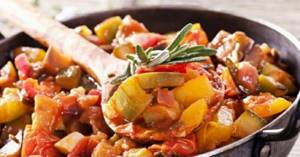
You will need:
- onions – 2 pcs.;
- carrots – 2 pcs.;
- zucchini – 1 pc.;
- potatoes – 2 pcs.;
- eggplants – 2 pcs.;
- bell pepper – 2 pcs.;
- garlic - a couple of cloves, optional;
- vegetable oil – 10 ml;
- Bay leaf;
- spices - to taste;
- greenery;
- meat broth – 100 ml.
Preparation:
- Wash, peel and cut vegetables.
- Simmer in a frying pan with vegetable oil and spices.
- At the end, add broth.
- Boil for 10 minutes and sprinkle with herbs.
Pollock with vegetables

You will need:
- onion – 1 pc.;
- carrots – 2 pcs.;
- celery root – 110 g;
- dill - a bunch;
- fish fillet – 410 g;
- juice of one lemon;
- vegetable oil – 10 ml.
Preparation:
- Cut and fry vegetables.
- Add citrus juice to 1 liter of water.
- Boil the fillet in this solution.
- Add the fish to the rest of the ingredients.
- Add liquid and simmer for 15 minutes.
Chicken fillet with tomato sauce
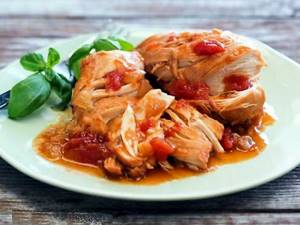
You will need:
- tomatoes – 500 g;
- chicken meat – 420 g;
- onion – 2 pcs.;
- lemon – 1 pc.;
- oil – 10 ml.
Preparation:
- Blanch the tomatoes and remove the skins.
- Cut them together with the onion and fry in oil.
- Add water and simmer.
- Boil the fillet in 1 liter of water mixed with lemon juice.
- Cut into strips and simmer in sauce for 10 minutes.
Diet without salt and sugar 14 days

This diet involves eating the same food every three days in a row. Of course, we must not forget about the main feature of the regime: all food must be prepared without salt, drinks must be unsweetened.
- From the first to the third day, the menu consists of chicken meat (not fried). It should be non-greasy, the skin must first be removed. It is allowed to consume up to 500 grams of meat per day.
- For the second three days, low-fat fish is eaten. The allowed amount is the same, 500 grams.
- On the third three days, the main product becomes porridge with water, to which milk can later be added. The weight of cereals for porridge should not exceed 250 grams.
- The fourth three days are vegetable days. You can't eat only potatoes; all other vegetables are not prohibited. Cucumbers, carrots, beets, radishes and zucchini are especially recommended. You can eat 1-2 kilograms per day.
- The last three days of the diet are fruit. The only fruit not allowed is bananas. You are allowed to eat up to 2 kilograms per day.
conclusions
A salt-free diet for 14 days allows you to quickly lose extra pounds and get rid of puffiness, but this is not a panacea for everyone who wants to lose weight. After returning to a normal diet, the lost weight will return again, and lasting results can only be achieved by a complete transition to a rational menu and the introduction of physical activity into life. But at the same time, a salt-free diet for 2 weeks can be a good start on the path to proper nutrition.
Reader’s story “How I lost 18 kg in 2.5 months” I’ve been fat all my life and suffered from excess weight. In clothing stores I chose size L, which by the age of 25 turned into XL and continued to grow. I can tell you for a long time how I tried to fight my 30-35 extra pounds: diets, hunger strike, physical activity, even pills and some kind of conspiracies. The effect was short-lived or absent altogether. In short, despair, depression and almost resignation to one’s enormous weight. But one day I came across... a chocolate bar that helps you lose weight! It didn’t cost me anything to try it - I love chocolates. I ordered it and ate it. And the weight crept down!! It seems like mysticism, but it's true. I began to study the issue and realized how it all works. Girls, try it! I have already lost 18 kg in 2.5 months. And I continue. It's up to you, but you don't lose anything except weight, of course. Try Choco Burn chocolate for weight loss for 147 rubles.
The benefits and harms of a salt-free diet
Unfortunately, scientists have not yet come up with an ideal system for losing weight, so a salt-free diet, along with its advantages, has a number of disadvantages. Among the advantages, it is worth highlighting its undoubted effectiveness, which allows you to lose up to 10 kilograms in one go. A salt-free diet will be useful for people with kidney and liver diseases, as well as problems with the cardiovascular system.
The disadvantages include the fact that this diet, if not followed correctly, can cause harm to health by causing salt deficiency in the body. This condition is accompanied by unpleasant symptoms such as loss of appetite, nausea, weakness, and drop in blood pressure. The likelihood of this complication increases during the hot season, when large amounts of salt are excreted through sweat.
The diet is not suitable if you have stomach diseases (gastritis, ulcers). In addition, a salt-free diet for pregnant women and nursing mothers is also prohibited.
Why is lack of salt dangerous?
A lack of sodium chloride in the body also negatively affects health, since the benefits of salt for humans are also invaluable. This is why a salt-free diet plan is only suitable as a temporary diet, not a permanent one. Without salt, adverse changes also occur in the body:
- the functioning of the heart, blood vessels, and kidneys is disrupted;
- salt is washed away from muscle tissue and bones;
- the functioning of the nervous system is disrupted.
In addition, it is strongly recommended not to give up sodium chloride for those who have heavy physical activity. During work, sweat (water and salt) is actively released, so replenishing reserves is simply necessary. In addition, it is strongly recommended not to completely abandon sodium chloride for pregnant women who are experiencing hormonal changes in the body. At the same time, to reduce swelling, it is extremely necessary to control the amount of salt consumed.
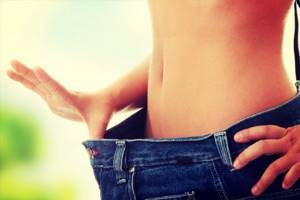
There is no need to go on a diet all the time; it is temporary. However, to consolidate the result in the future, it is recommended to limit the consumption of fatty and salty foods.
Salt-free diet: reviews before and after
The healthy salt-free diet has good reviews and recommendations, so we recommend that you take a two-week course of treatment. This nutrition system is considered quite difficult and is not tolerated by everyone, but at the same time it is one of the fastest and most effective: according to reviews, in 13 days of the diet you can get rid of a dozen extra pounds. At the end of the article you can read various reviews, as well as see “before” and “after” photos.
Contraindications
Before starting a diet, you must consult with a specialist and undergo an examination of your body’s health. Strict contraindications are:
- hypertension;
- IHD (coronary heart disease);
- severe pathologies of the liver and kidneys;
- rheumatism;
- stomach diseases;
- inflammatory processes in the intestines;
- pregnancy, lactation;
- thyroid dysfunction;
- age under 18 years (teenagers) and after 55;
- intense physical activity (for example, professional sports, dancing).
